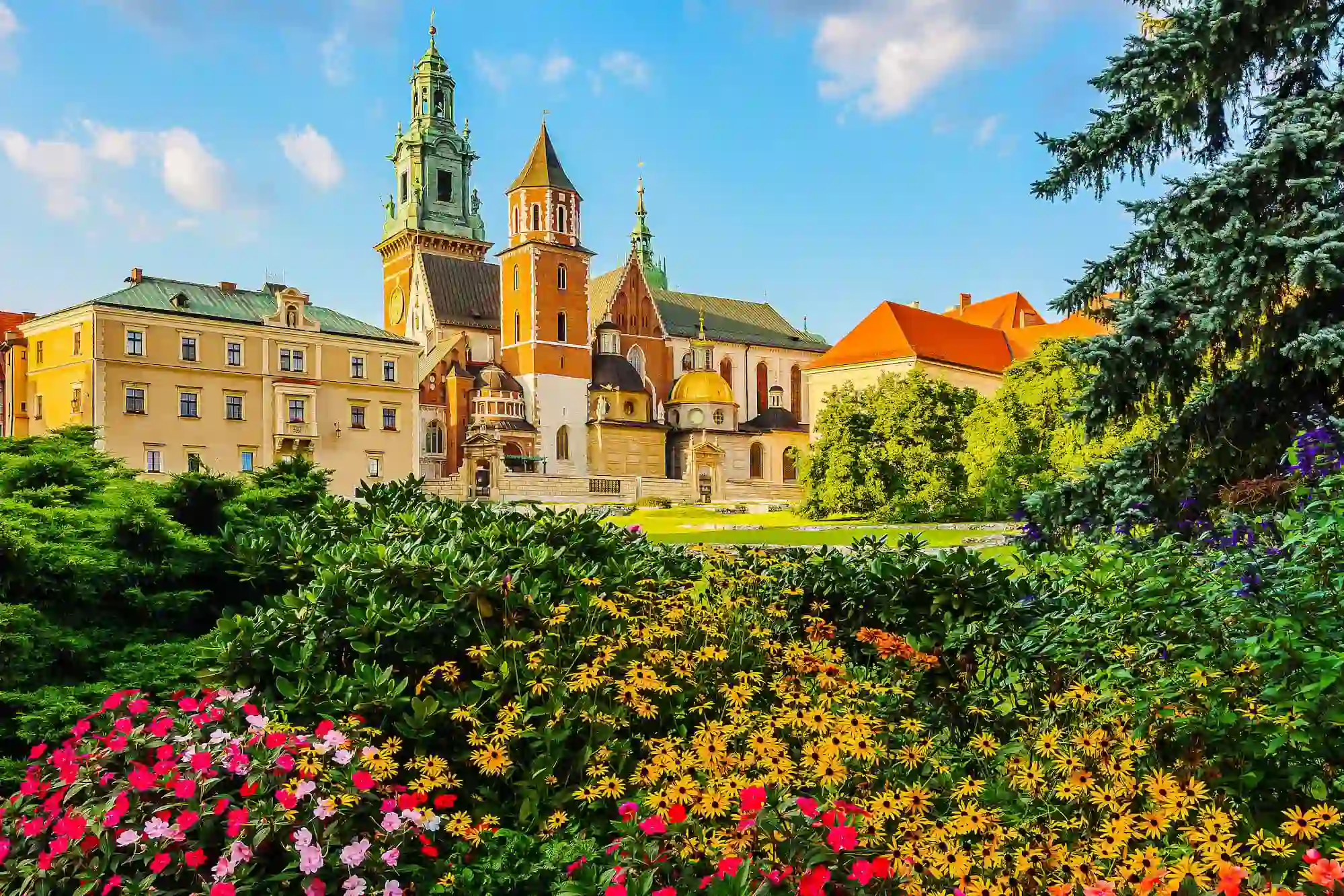
Travel treats: Our top five unique Halloween traditions around the globe
It’s the spookiest time of year, so why not lift the lid on some of the world’s most interesting Halloween traditions? Plus, enjoy a treat from the Emerald Isle.
As people around the world don their scariest fancy dress and giddily wander the streets in search of sweets, we’re taking a look at the meaning behind Halloween and the most unique ways it’s celebrated around the world. From fava-bean cookies to impromptu zombie outbreaks on the metro, here are our top five seasonal traditions to experience abroad. First and foremost, though, what’s it all about?
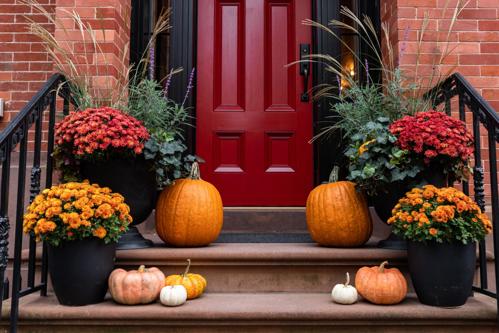
Where does Halloween come from?
Though there’s no single original celebration that Halloween draws from, the Celtic festival of Samhain (pronounced sow-in) is the closest forerunner to the traditions we see today. Brought to the Americas by Irish and British immigrants in the 18th century, it then developed over the years into the celebration we see today.
Why is it celebrated?
Drawing influences from the Christian All Hallows Eve and the Celtic harvest festival, Samhain, Halloween started as a time to celebrate the end of the harvest season and remember the dead. Despite having been vastly commercialised since the 20th century, you can still see these values underlining the celebrations.
Who takes part?
Halloween might have originated in Pagan culture, but it’s now much more widely celebrated across the globe, from the Americas to western Europe, and even parts of Asia.
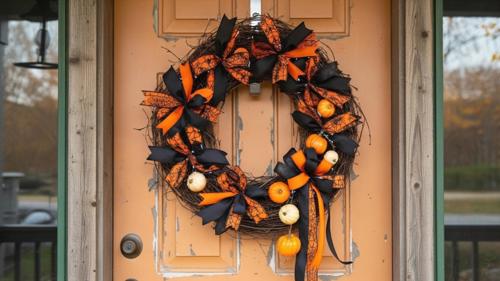
Where to find the best celebrations
While it’s most popular in North America, unique traditions and regional variations on familiar favourites can be found across the globe. Here are five that give the Halloween celebrations an interesting twist.
1. The UK – Apple bobbing
Starting with a familiar sight to many households across the UK, Ireland, and North America, apple bobbing is a surprisingly historic pastime, particularly around Halloween. In England and Wales, the game was originally used as a courting ritual, having been brought over by Roman settlers in celebration of Pomona, the goddess of fruit trees. It then blended with the British Isles’ existing Samhain festivities and became as much about the harvest as it was about love. Nowadays, it’s a regular feature of Halloween parties which fall on Samhain!
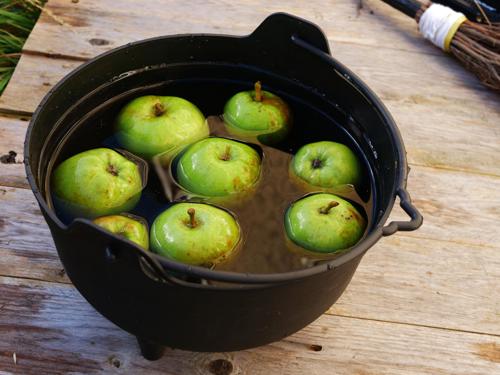
2. Italy – Ghost beans
In Italy, Halloween isn’t as commonly celebrated, but that doesn’t mean there aren’t several seasonal traditions that coincide with the All Saints’ festival the following day. Known as Ognissanti, this Italian holiday is a more poignant affair with families leaving offerings by relatives’ graves, sharing gifts from beyond the grave, and enjoying traditional foods. One of the most popular foods, fava dei morti (beans of the dead), is almond biscuits shaped like fava beans. The biscuits don’t actually contain beans but are made to resemble them as a nod to the ancient Romans, who believed that lost souls resided in the humble fava.
3. Ireland – Jack o’ Lanterns
Though pumpkin carving would appear to be as American as apple pie, the tradition actually started in Ireland – and with turnips instead of pumpkins! The name Jack o’ Lantern comes from the tale of ‘Stingy Jack’, a thief who hoodwinked the devil and found himself stuck between heaven and hell when he died. Doomed to wander the earth, and with no light of his own, the lost soul carved out a turnip and placed a burning coal inside to guide his way. People celebrating Samhain would carve turnips in honour of the tale, and so the tradition was born. It was only when Irish settlers, who’d brought the tale over to North America, started farming easier-to-grow pumpkins that the modern Jack o’ Lantern started to appear.
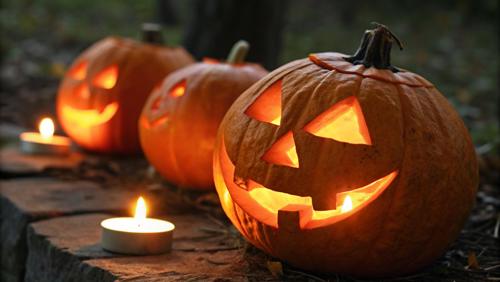
4. Central America – Dia de los Muertos
In truth, Halloween isn’t as popular in countries like Mexico, Ecuador, and Panama as Central America’s famous Dia de los Muertos (Day of the Dead) celebrations. Despite this, there’s no denying that the two festivals share more than a few links to Halloween. Comprising colourful, costumed parades, poignant ofrendas (altars) at home, and the sharing of skull-shaped cookies, Dia de los Muertos commemorates deceased loved ones and is held on the first of November each year.
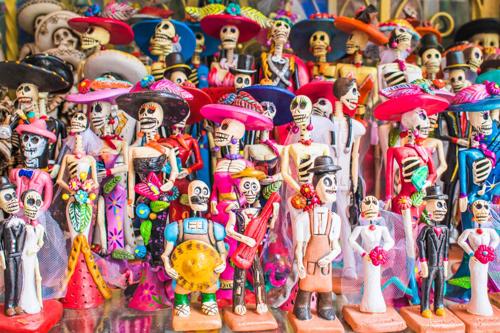
5. Japan – Halloween Trains
Though it’s a relatively new addition to the Japanese calendar, Halloween has quickly become one of the country’s most popular annual celebrations, and it even has a host of unique traditions. While Japanese cosplay culture and street parades are commonplace, Japan’s underground metro stations become the staging ground for an altogether more unusual tradition. In Tokyo and Osaka, festivities on the rails can range from moving haunted houses, complete with costumed actors, to impromptu Halloween parties on the metro – a sometimes unexpected but wholly unique experience!
Try your hand at a traditional Irish barmbrack
Enjoy an authentic Irish treat in honour of Halloween with our quick and simple barmbrack recipe. For the best results, prepare your barmbrack two days in advance.
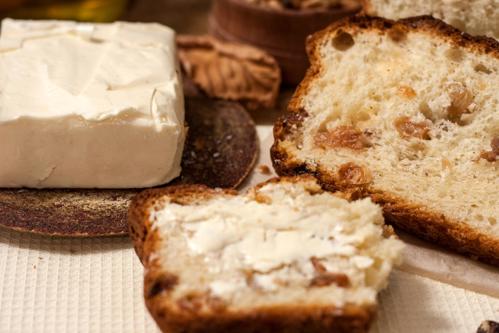
What you’ll need
- 350g mixed dried fruit
- 2 oranges
- 300ml warm, strong black tea
- 50ml whiskey
- 1 tsp dried yeast
- 75ml warm milk
- 500g self-raising flour
- 125g demerara sugar
- 1 tsp mixed spice
- 1 tsp ground cinnamon
- 1 tsp ground ginger
- Pinch of salt
- 2 free-range eggs, lightly beaten
- A ring, coin or cloth (to hide inside!)
- A baking tin
- Greaseproof paper
- Butter (for greasing and some to serve)
How to do
1. Brew 300ml of strong black tea and leave it to cool for a few minutes. As the tea cools, zest and juice both your oranges.
2. Add your dried fruit to a bowl and combine with the orange juice, zest, whiskey, and cooled tea. Let the mixture steep for a few hours or better yet overnight.
3. Preheat your oven to 180°C fan (gas mark 6), and your baking tin with greaseproof paper.
4. Combine your flour, baking powder, salt and sugar in a bowl. Stir through your cinnamon, ginger, and mixed spice, and make a well in the small middle of the bowl.
5. Crack your eggs into the well and gently stir until they start to come together. You can add a splash of your steeping liquid here to loosen it up.
6. Add the rest of the steeped fruit mixture and stir thoroughly until you’re left with a moist, well-combined batter.
7. Add in your trinkets (a ring, cloth, or coin) to hide inside the cake and pour the batter into your lined baking tin. Bake uncovered for 30 minutes before wrapping with tin foil and returning to the oven for a further 30.
8. Once the cake has finished cooking, wrap it in cling film and leave it to rest for a day or two before enjoying.
9. Serve warmed up or cold (a pad of butter is optional) and enjoy with a mug of tea or coffee (be careful to check your slice before eating for the hidden trinkets)
Soak up the world’s most unique Halloween traditions with Newmarket Holidays
Unwrap your own travel treat and experience memorable Halloween-themed traditions across the globe. For more information, or to discuss which getaway is right for you, give our friendly holiday planners a call today. You can also check out our full range of escorted tours by visiting our destinations page.







